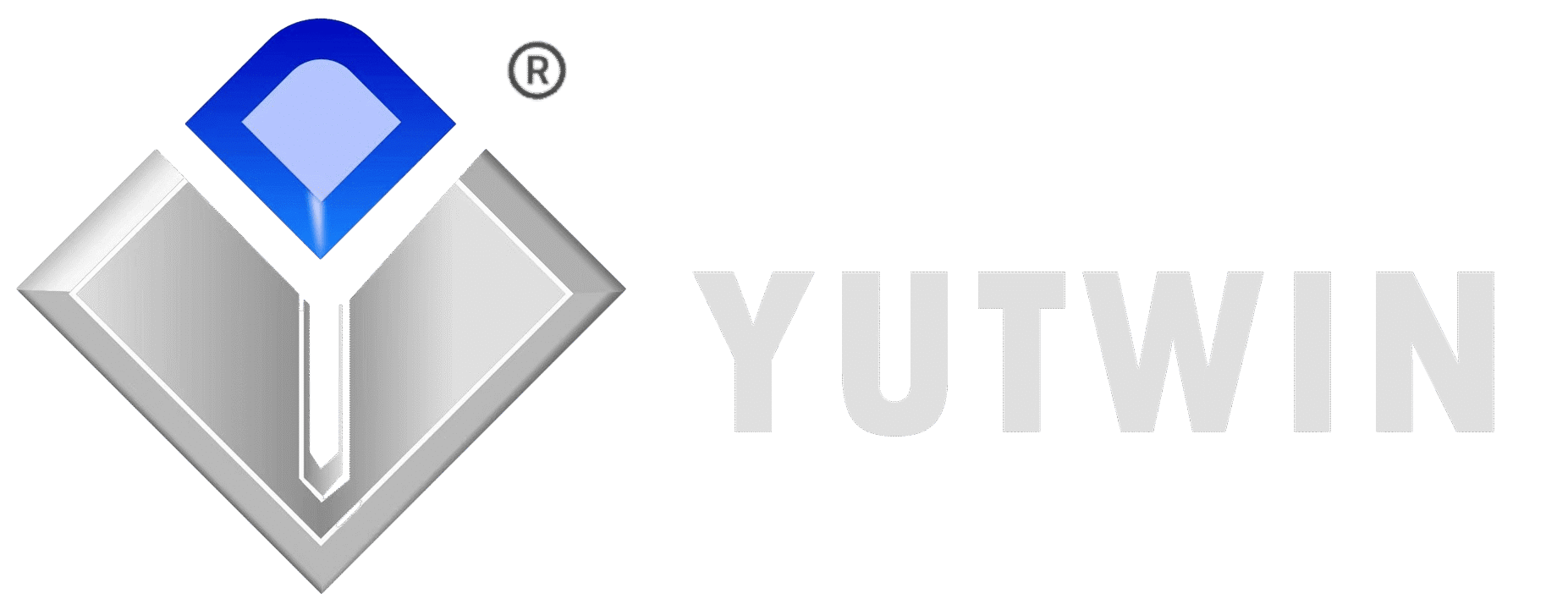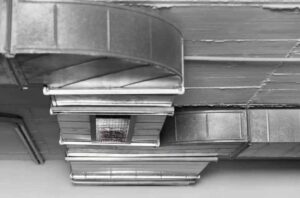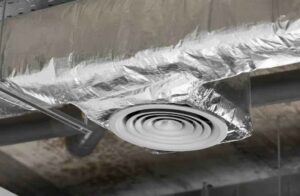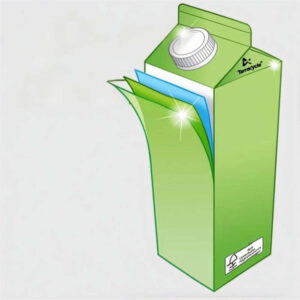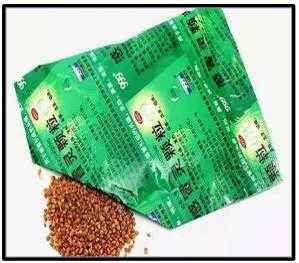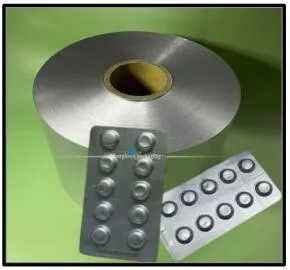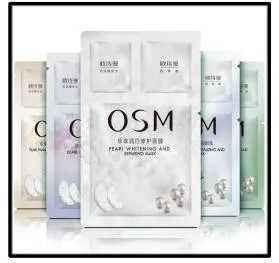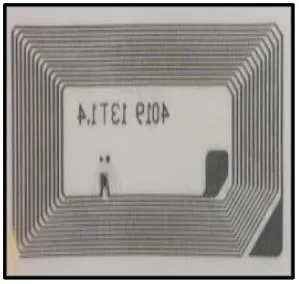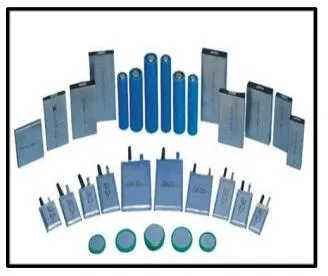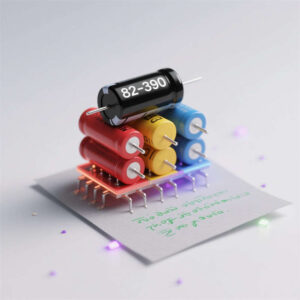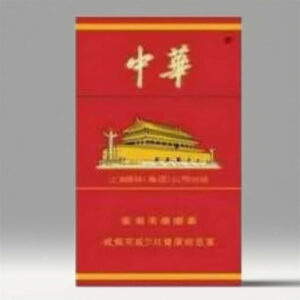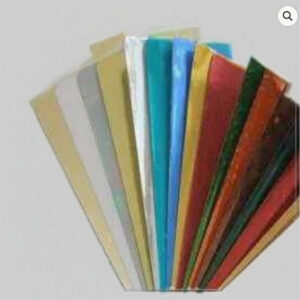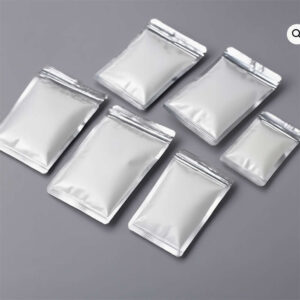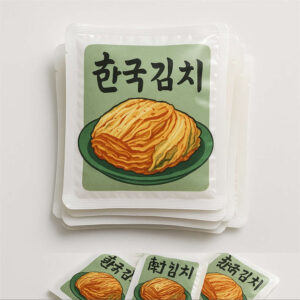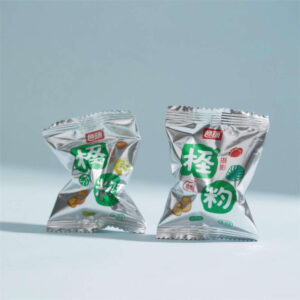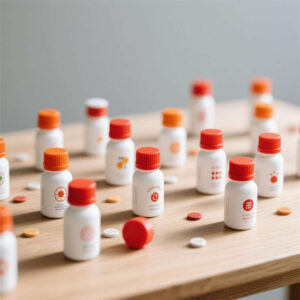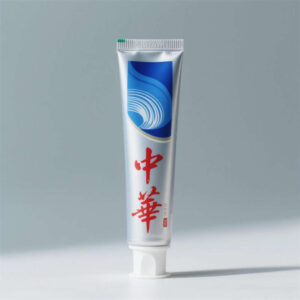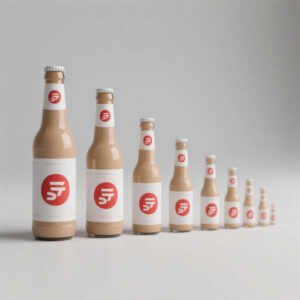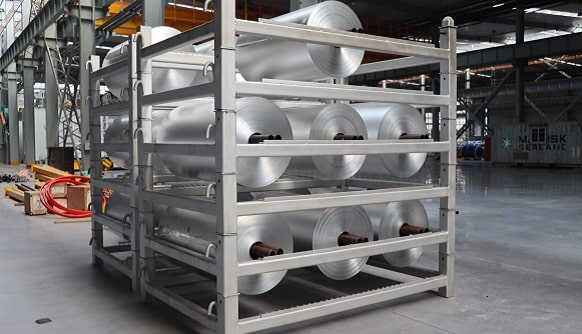
Yutwin's Aluminum Foil are used in a variety of applications
Yutwin produce and supply aluminum foil in various specifications, our materials are used in a wide variety of industries and applications, mainly by processors and manufacturers of technical products

Want to cooperate with Aluminum Foil Manufacturer?or You Want to Get Custom Aluminum Products?
Dive into the world of Yutwin New Materials, your trusted Aluminum Foil Supplier and Manufacturer from China
What is Aluminum Foil
A material that uses the metal aluminum that has been calendered to form a thin sheet capable of producing an effect similar to that of sterling silver foil stamping, and is therefore also known as the fake silver foil. Aluminium has a silvery-white luster due to its soft texture and good flexibility. Suppose the calendered sheet is mounted on offset paper, and a substance such as sodium silicate is added. In that case, it is possible to produce an aluminum foil sheet that can be printed. However, aluminum foil oxidizes easily, takes on a dark color, and is prone to losing its color by rubbing or touching, making it unsuitable for stamping book or magazine covers to be kept for long periods.
Aluminum foil has many excellent characteristics and is therefore widely used as a packaging material for food, beverages, cigarettes, pharmaceuticals, photographic backing boards, household goods, etc.; as a material for electrolytic capacitors; as an insulating material for buildings, vehicles, ships, houses, etc.; and as decorative gold and silver wires, wallpaper, and decorative trademarks for a variety of stationery prints and light industrial products. Among these uses, the most effective performance of aluminum foil is as a packaging material.
Aluminum foil is a soft metal film, which not only has the advantages of being moisture-proof, airtight, light-shielding, wear-resistant, freshness preservation, non-toxicity, and tastelessness, etc. but also because of its elegant silvery-white luster, is easy to process all kinds of beautiful patterns and patterns. Therefore, it is even more popular among people. Especially after compounding with plastic and paper, the shielding property of aluminum foil is combined with the strength of paper and the heat sealing property of plastic, which further improves the shielding ability against water vapor, air, ultraviolet rays, bacteria, etc., necessary as a packaging material, and greatly broadens the application market of aluminum foil. The packages are well protected since the packaged goods are completely isolated from external light, humidity, air, etc.
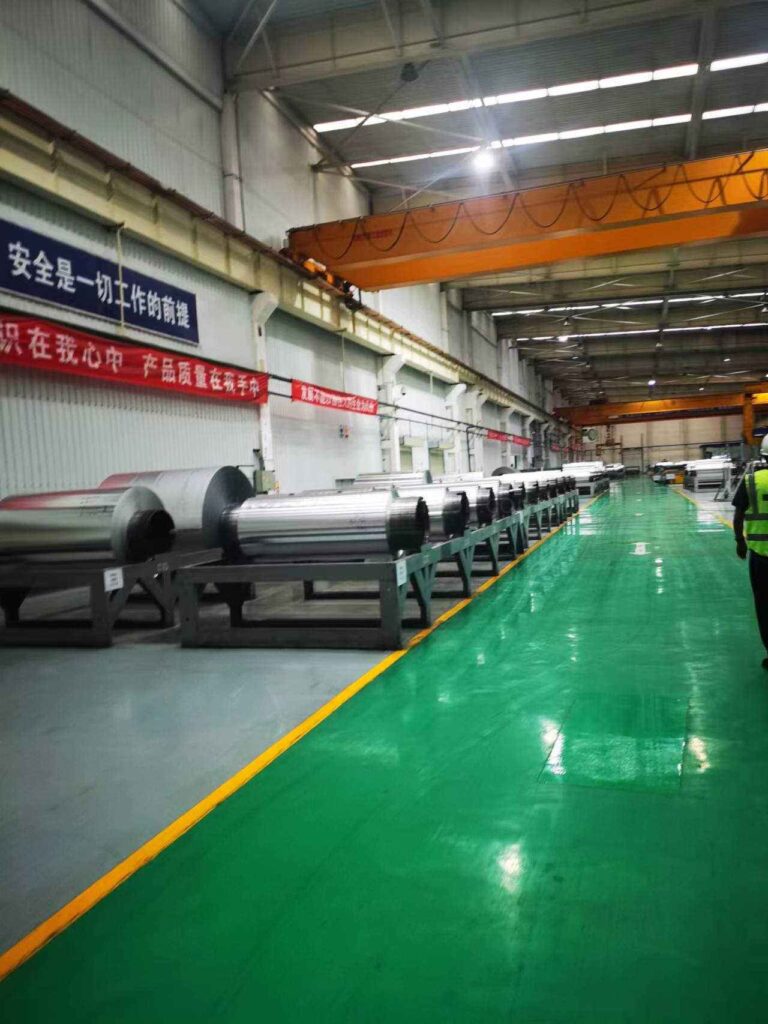
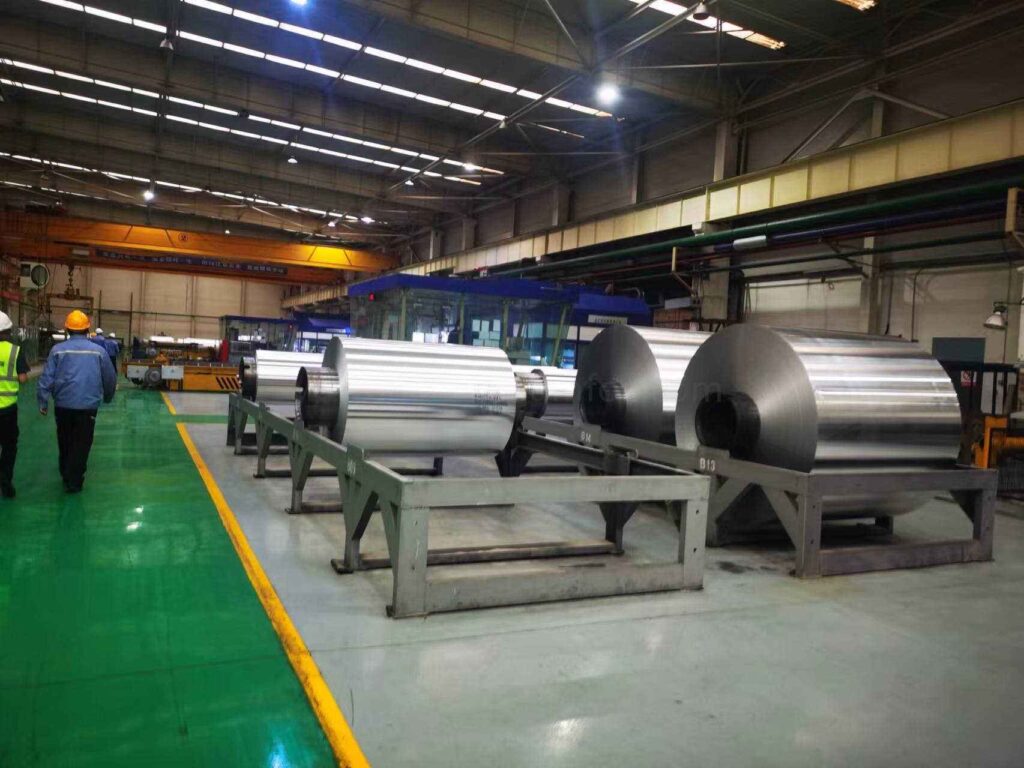
Especially for the packaging of boiled food, this composite aluminum foil material can ensure that the food will not deteriorate for at least one year. Moreover, it is very convenient to heat and open the package, which is popular among consumers.
With the improvement of people’s living standards and tourism development, the demand for beverages such as beer, soft drinks, and canned food is increasing. To meet the demands of international market competition, these products need modern packaging and decoration. Packaging materials such as plastic film and spray-plated foil with good shielding properties have been developed to meet the market demand. Still, their comprehensive performance could be better than the refinement and improvement overcoating and laminating processes can provide. Therefore, aluminum foil is a perfect packaging material with various excellent properties and broad application prospects in various fields.
To improve the efficiency of aluminum foil rolling and product quality, modern aluminum foil rolling mills are developing in the direction of large rolls, wide widths, high speeds, and automation. Today’s aluminum foil rolling mill roll width is more than 2200mm, rolling speed reaches more than 2000m/min, and roll weight reaches more than 20t. At the same time, the automation level of the mill has also been significantly improved, with the thickness control system (AGC) commonly installed and most of the plate formers (AFC) also installed. The aluminum foil industry is in a period of high-speed development.
Classification of Aluminum Foil
Thickness
Aluminum foil
Depending on the thickness, aluminum foil can be divided into thick, single-zero, and double-zero foil.
① Thick aluminum foil (“heavy gauge foil”): refers to aluminum foil with a 0.1 to 0.2mm thickness.
② Single-zero foil (“medium-thickness foil”): refers to foil with a thickness between 0.01mm and 0.1mm.
③ Light gauge foil (“lightgaugefoil”): The so-called light gauge foil refers to the thickness of millimeters as a unit of measurement when the decimal point after two zeros of the foil, generally speaking, the thickness of less than 0.01 mm, that is, 0.005 ~ 0.009 mm of aluminum foil. Abroad, aluminum foils with a thickness of ≤40ltm are sometimes referred to as “thin and light foils,” while aluminum foils with a thickness of >40btm are collectively referred to as “thin and heavy foils.”
Shape
Aluminum foil can be divided into rolled and sheet aluminium foil according to shape. Most aluminum foil materials are supplied in rolls, and sheet foil is only used in some handmade packaging applications.
According to its state, aluminum foil can be divided into rigid, semi-rigid, and soft.
① Rigid foils are aluminium foils that have been rolled without softening treatment (annealing), and if they are not degreased, residual dirt will remain on their surface. Therefore, the hard foil must be degreased before printing, laminating, and coating, while it can be used directly if it is to be used for the forming process.
Semi-hard foils are aluminum foils with a hardness between hard and soft foils. Semi-hard foils are usually used for forming processes.
(iii) Soft foils are aluminium foils that become soft after sufficient annealing and are made of soft material with no residual oil on the surface. Soft foils are used in various fields, such as packaging, composite, and electrical materials.
Surface condition
Aluminum foils can be divided into aluminium foils with one glossy side and aluminium foils with two glossy sides, according to the condition of the surface.
① One-side glossy aluminum foil: After two layers of aluminium foil are rolled together and divided into different rolls, one side of the foil shows a glossy effect while the other side is dull; this kind of aluminium foil is called a one-side glossy aluminium foil. Normally, the thickness of single-sided glossy aluminum foil does not exceed 0.025mm.
-Double-sided glossy aluminum foil is made from a single sheet of rolled aluminum foil, which is in contact with the rolls on both sides. Depending on the rolls’ surface roughness, the aluminum foil’s two sides are divided into mirror two-sided glossy aluminum foil and ordinary two-sided glossy aluminum foil. The thickness of two-sided glossy aluminum foil is generally at least 0.01mm.
Processing condition
According to different processing conditions, aluminum foil can be divided into several forms with different processing states, including raw plain foil, patterned foil after the embossing process, composite foil after the laminating process, coated foil after the coating process, colored aluminum foil after the coloring process and printed aluminum foil with printing patterns.
① Plain foil is the aluminum foil that has been rolled without any other processing and is also known as the light foil.
Embossed foil is an aluminum foil with various patterns embossed on its surface.
③ Composite foil: It is a composite aluminum foil formed by bonding aluminum foil with paper, plastic film, and cardboard.
Coated foil is a material with various resins or lacquers coated on the surface of aluminum foil.
⑤ Coloured foil: It is an aluminum foil with a single color painted on its surface.
⑥ Printed aluminum foil: It is an aluminum foil in which various patterns, designs, words, or pictures are formed on the surface by printing, either in a single color or in up to 12 colors.
Flexible aluminum foils can be compressed into four-zero ones for high-end decorative applications.
Features of Aluminum Foil
Aluminum foil is widely used as a packaging material because of its clean, hygienic, and shiny appearance. It can be integrated with other materials and prints better than other materials. In addition, aluminum foil has the following characteristics:
(1) The surface of aluminum foil is so clean and hygienic that no bacteria and microorganisms can grow on its surface.
(2) Aluminium foil is a non-toxic packaging material and can come into direct contact with food without causing harm to human health.
(3) Aluminium foil has no taste or odor and will not add odor to the packaged food.
(4) Aluminium foil and the packaged food will not dry out or shrink because it is not volatile.
(5) Aluminium foil does not allow grease to penetrate, whether at high or low temperatures.
(6) Aluminium foil is impervious to light, making it a good packaging material for products that require protection from the sun (such as margarine).
(7) Aluminium foil is very malleable and can be used to wrap products of various shapes and to make containers of various shapes.
(8) Aluminium foil is hard and tensile but easily torn and has low tear strength.
(9) Aluminium foil cannot be used for heat sealing and sealing. It must be coated with a heatable material, such as PE, to achieve heat sealing.
(10) Aluminium foil may react adversely if it comes into contact with other heavy metals or metal types.
Features of Aluminum Foil
Air conditioning aluminum foil
Air conditioning foil is a film material that can protect air conditioning units. It prevents dust, dirt, and other debris from entering the interior of the air-conditioner, keeping it clean and in good working condition. Air conditioning foil can also act as a heat insulator, preventing the air conditioning unit from emitting too much heat to the outside, improving the efficiency and energy saving of the air conditioner. Using air conditioning foils can extend the service life of air conditioning units and reduce the cost of repairs and maintenance. Different sizes of air-conditioning foils can be selected according to the model and size of the air-conditioning unit to ensure complete coverage and protection of every part of the air-conditioning unit. Convenient and easy to install and remove, air conditioning foils protect air conditioning units in every home and office environment.
Air conditioning foil is a material specifically used to make fins for heat exchangers. Early air conditioning foils used were plain, but hydrophilic foils were developed to improve their surface properties. Hydrophilic foils, coated with corrosion-resistant inorganic coatings and hydrophilic organic coatings before forming, account for 50 percent of the total air conditioning foils and are used in progressively higher proportions. In addition, there is a hydrophobic foil that has the function of preventing condensate from adhering. Still, since the technology for improving the defrosting properties of surfaces with hydrophobic foils requires further research, actual production is low.
The thickness of air-conditioning foils ranges from 0.1mm to 0.15mm. As technology continues to evolve, air-conditioning foils are being developed toward even greater thinness, with Japan’s main product already reaching a thickness of 0.09mm. In a very thin state, aluminum foil needs to have good formability, its organization, and properties must be uniform, with fewer metallurgical defects and less anisotropy, and it also requires high strength, flexibility, uniform thickness, and good flatness. Air-conditioning foils are suitable for mass production because of their relatively small number of specifications and alloy types. However, due to the strong seasonality of the market, it is difficult for specialized manufacturers of air-conditioning foils to solve the contradiction between the oversupply in the peak season and the virtually non-demand in the off-season.
In recent years, due to market demand growth, the production capacity and technical level of air-conditioning foils in China have been significantly improved. Now, China has formed a group of enterprises producing large, medium, small, high, medium, and low-end air-conditioning foils, and some of these large enterprises, such as North China Aluminium and Bohai Aluminium, have reached the internationally advanced level of product quality. However, due to the excess production capacity in China, the market competition has become extremely fierce.
Aluminum Foil for Cigarette Packaging
Cigarette packaging foil is a film material used for packaging cigarettes. It is usually made from a composite of aluminum foil and paper and has the property of blocking light, gas, and moisture. The main function of cigarette packaging foil is to protect tobacco from the external environment and ensure the quality and taste of tobacco. In addition, cigarette packaging foil also serves as an anti-counterfeiting, decorative, and display product. It can be personalized through printing, hot stamping, and coating processes to improve brand recognition and market competitiveness. Cigarette packaging foil is an indispensable and important material in the cigarette industry, playing a decisive role in the quality and appearance of cigarette products.
China is the world’s largest cigarette-producing and consuming country. There are 146 large cigarette factories in China, with an annual output of 34 million large boxes. These cigarettes are packaged in cigarette foil, of which 30% is spray-plated, and 70% is calendered aluminum foil. The consumption of calendered aluminum foil reaches 35,000 tonnes. With increased health concerns and the impact of foreign cigarette imports, the demand for cigarette foil has slowed significantly but is expected to increase slightly in recent years.
It accounts for 70 percent of the total cigarette packaging foil in China. There are two or three domestic enterprises capable of producing high-quality cigarette foil, with a technical level comparable to the international level.
Aluminum Foil for Decoration
Decorative foil for aluminum-plastic composite is a decorative material that uses the characteristics of good coloring and high light and heat reflectivity of aluminum foil. It is mainly used for decorating buildings and furniture, as well as packaging some gift boxes. In China’s construction industry, decorative foil was applied in the 1990s. It was initially limited to major cities such as Shanghai, Beijing, and Guangzhou but has now spread rapidly throughout the country. In recent years, market demand has increased dramatically, and decorative foils are commonly used as decorative materials for the interior walls of buildings and furniture. They are widely used in the facades and interiors of commercial organizations.
Decorative foil has the advantages of heat insulation, moisture resistance, sound insulation, fire prevention, easy cleaning, luxurious appearance, convenient processing, and fast construction. China’s construction and home decoration industries have seen a boom in the application of decorative foils. With the rapid development of China’s construction industry and the continuous promotion of the application of decorative foils, the demand for decorative foils will increase significantly. In addition, the use of decorative foils as a gift-wrapping method, which has long been popular abroad, has also developed rapidly in China in recent years and is expected to have a good future.
Aluminum Foil for Cable
Cable foil is a metal foil material used for cable insulation. It is usually made of aluminum or aluminum alloy and has good conductivity and corrosion resistance. Cable foil is widely used in electric power, communication, and other fields to protect the cable insulation layer. Due to the unique properties of cable foil, it can effectively improve the performance and service life of cables.
Cable foil is a composite material used for cable protection, mainly composed of aluminum and plastic film. Based on aluminum foil’s airtight and shielding properties, an aluminum-plastic composite foil is formed by applying a plastic film on one or both sides. The surface of the cable foil needs to contain a small amount of oil, be free of holes, and have high mechanical properties. Although the quality requirements are low, the length requirements are extremely strict.
The country has the production capacity of advanced cold rolling mills, 10,000 mills, and aluminum foil roughing mills. Still, the market development prospects could be better, and the annual domestic demand is only about 25,000 tonnes.
More Application of Aluminum Foil
The surface of aluminium foil should be flat, clean and without obvious colour difference. It is not allowed to have defects affecting performance such as corrosion, roller marks, abrasions, scratches, dark surface highlights, oil spots, wrinkles, etc. It is not allowed to have serious ribs, bulges, bright
line, stripes, bruises and holes and other defects affecting the use.
The surface of aluminium foil should not have obvious colour difference and must be kept flat and clean. There should be no defects such as corrosion, roller marks, abrasions, scratches, dark surface highlights, oil spots, wrinkles, etc. Also there should be no obvious surface problems such as ribs, bulges, bright lines, stripes, collision marks, etc., which will affect the performance of the aluminium foil.Defects such as damage and holes will affect the use of the item.
The surface of aluminium foil should be flat, clean and without obvious colour difference. It is not allowed to have defects affecting performance such as corrosion, roller marks, abrasions, scratches, dark surface highlights, oil spots, wrinkles, etc. It is not allowed to have serious ribs, bulges, bright
line, stripes, bruises and holes and other defects affecting the use.
The surface of aluminium foil should be flat, clean and without obvious colour difference. It is not allowed to have defects affecting performance such as corrosion, roller marks, abrasions, scratches, dark surface highlights, oil spots, wrinkles, etc. It is not allowed to have serious ribs, bulges, bright
line, stripes, bruises and holes and other defects affecting the use.
The surface of aluminium foil should be flat, clean and without obvious colour difference. It is not allowed to have defects affecting performance such as corrosion, roller marks, abrasions, scratches, dark surface highlights, oil spots, wrinkles, etc. It is not allowed to have serious ribs, bulges, bright
line, stripes, bruises and holes and other defects affecting the use.
Uniform colour, clean and neat foil surface, good plate shape, no bumps, no corrosion, roller marks, scuffs, scratches, oil spots, wrinkles, foreign matter pressed in and periodic defects. No warped and wavy edges, flat end surfaces, good cutting edges, no lappings, and no periodic defects.
Good edges, no sharpness, no drawing, no vibration.
Aluminium foil appearance is clean, flat, no cracks, no creases, no scratches, no No bonding, no colour difference, a very small amount of slight oil stains can be wiped off and a small amount of slight abnormalities are allowed, which do not affect the use. and a small amount of minor abnormalities, does not affect the use of aluminium foil edges without bumps, scratches, winding neat, deviation ≤ 2mm, both sides of the burr arc to 1mm, can not have obvious lace. There should be no obvious lace.
The surface of aluminium foil should be flat and clean. Corrosion, roller marks, abrasions, scratches are not allowed,
Dark surface bright spots, oil spots, wrinkles and other defects affecting the use of the aluminium foil, does not allow serious
There are no serious ribs, bulges, bright lines, stripes and bruises, and the dark surface of aluminium foil is not allowed to have obvious colour differences.
The surface of aluminium foil should be flat and clean. It is not allowed to have defects affecting the use such as corrosion, roller marks, abrasion, scratches, dark surface highlights, oil spots, wrinkles, etc. It is not allowed to have serious ribs, bulges, bright lines, stripes and bruises, and the dark surface of the aluminium foil is not allowed to have obvious colour difference. The end surface should be neat and smooth, without obvious colour difference and without heavier defects that affect the opening of the product.
The surface of aluminium foil should be flat and clean, and no corrosion, roller marks, abrasions, scratches, dark surface highlights, oil spots, wrinkles and other defects affecting the use are allowed, and no serious rippling, bulging, bright lines, stripes and shadow
The dark surface is not allowed to have obvious colour difference.
The end surface of aluminium foil rolls should be neat, with smooth edges and no burrs.
The surface of aluminium foil should be flat and clean. No corrosion, roller marks, abrasions, scratches, dark surface highlights, oil spots, wrinkles and other defects affecting the use of the aluminium foil are not allowed, no serious ribs, drums, bright lines, stripes and bruises, and the dark surface of the aluminium foil is not allowed to have an obvious colour difference.
The surface of aluminium foil should be flat and clean. No corrosion, roller marks, abrasions, scratches, dark surface highlights, oil spots, wrinkles and other defects affecting the use of the aluminium foil are not allowed, no serious ribs, drums, bright lines, stripes and bruises, and the dark surface of the aluminium foil is not allowed to have an obvious colour difference.
The end surface should be neat and smooth, without obvious colour difference, and without heavier shadow
The end surface should be neat and smooth, without obvious colour difference, and without defects that will affect the opening of the product.
The surface of aluminium foil should be flat and clean. No corrosion, roller marks, abrasions, scratches, dark surface highlights, oil spots, wrinkles and other defects affecting the use of the aluminium foil are not allowed, no serious ribs, drums, bright lines, stripes and bruises, and the dark surface of the aluminium foil is not allowed to have an obvious colour difference.
The dark side of the aluminium foil shall not be allowed to have a significant colour difference. The end surface should be neat and smooth, without obvious colour difference and without heavier defects that affect the opening of the product. Slight burrs, bumps and bruises, uneven end surfaces, colour difference, warped edges, radial jaggedness and other defects are permitted
